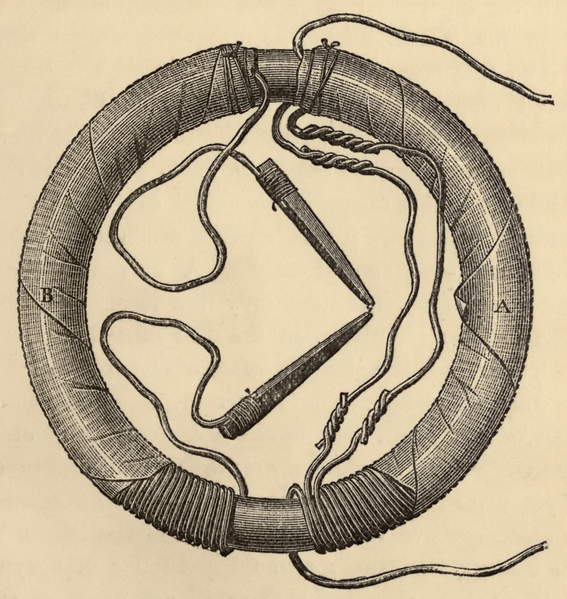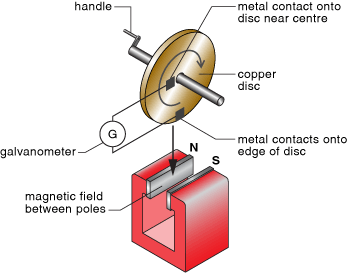Power Transmission

The power is generated at a generating station, such as at a hydroelectric
plant, a wind turbine site, nuclear reactor, ... and then must be transported
to where it is used. The question is how to do it efficiently.
- The first
step is to generate the power, P = I x V
in the circuit. This is accomplished in many ways,
some of which have been discussed.
- Note that there is a step before the actual transmission occurs.
The Power (energy) is run through a
transformer where the voltage is increased to very
high levels, say > 100,000 Volts.
Q: Why is the voltage
increased to these high levels?
- As the current flows through the transmission line, the friction
(resistance) causes it to lose energy
(Ohmic Losses). The rate at which energy is lost is
given by
Q = I2 x R
The larger the current I
and/or the larger the resistance R, the more
frictional (Ohmic)
losses there are. So, to minimize the losses, we
want to make either I small or R
small (or make both small).
- So for a fixed amount of power, P = I x V,
if we step-up the voltage, V, then less current,
I, is needed to carry the
energy!
A stepped-up voltage, V, lowers the current,
I, leading to less Ohmic
losses.
- At the destination, a series of Step Down transformers are
used to lower the voltage,
e.g.,
to 110 or 220 Volts for use in homes.
| Transformers

 Transformers can be understand based on
Faraday's Law. We have that:
Transformers can be understand based on
Faraday's Law. We have that:
- AC is run through the coil on the left hand side of the transformer. The
changing current produces a changing magnetic field B. This changing
magnetic field threads the coil on the right inducing a voltage. In
this way energy is transported from the left to the right without a
connecting wire.
- The transformer can be made more efficient, however, by adding
material into the coils, e.g., ferro-magnetic material.
The magnetic field is then enhanced and guided by the ferro-magnetic
material to the coil on the
right. There, the enhanced varying magnetic field induces a voltage.
- If each side had the same size coil then no change in voltage would occur
- The left coil has more loops, however, which means that the magnetic
field induces a voltage in the right coil lower than the driving voltage
- This transformer that has more loops on the left than on the right
lowers the voltage, it is a Step Down Transformer
|


